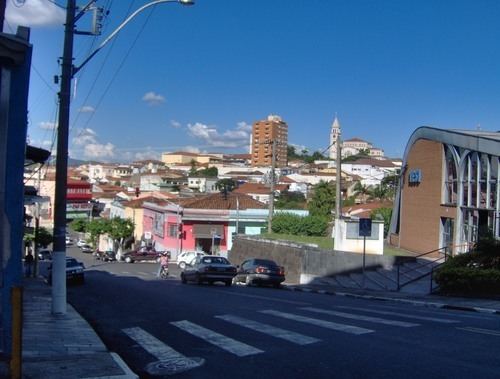Time zone BRT/BRST (UTC-3/-2) Population 72,514 (2014) | Elevation 643 m (2,110 ft) Area code +55 19 Local time Thursday 9:44 PM | |
 | ||
Weather 24°C, Wind E at 6 km/h, 69% Humidity | ||
Itapira is a municipality in the state of São Paulo in Brazil. The population is 72,967 (2015 est.) in an area of 518 km². The elevation is 643 m.
Contents
Map of Itapira, State of S%C3%A3o Paulo, Brazil
History
Settlement began in the 18th century, and from 1820 a town grew around the chapel of Nossa Senhora da Penha. It became a municipality under the same name Nossa Senhora da Penha in 1858, when it was separated from Mogi Mirim. In 1875 it was renamed Penha do Rio do Peixe, after the nearby river, Rio do Peixe. In 1890 it was renamed Itapira.
The small town gained unwelcome fame after a widely publicized murder in February 1888. The campaign to abolish slavery was then at its height (and was finally successful two months later). Already, many slaves were absconding. The local police chief, Joaquim Firmino de Araújo Cunha, known for his abolitionist views, was rumoured to protect and assist runaway slaves. An angry group of local farmers surrounded his house and beat him to death. The murder and the subsequent trial (no-one was convicted) attracted much newspaper coverage, making Penha Rio do Peixe notorious. Two years later the town asked for its name to be changed to Itapira (a name drawn from the Tupi language).
Economy
Today Itapira services an agricultural hinterland which grows oranges, sugar-cane, cattle and (now-declining) coffee, but is also a manufacturing centre, specializing in wood and paper products, agricultural machinery, and ethanol production. The establishment in 1937 (by spiritist groups) of the pioneering Instituto Bairral psychiatric hospital in Itapira has fostered a well-developed health sector, both public and private. The town is home to a large number of professionals (such as the noted economist J.B. de Souza Ferreira Fo.), many of whom commute to neighbouring towns such as Campinas. The current mayor is José Natalino Paganini, an ex-footballer.
The town's Historical Museum displays interesting relics of one of the last major battles of the Paulista War, which was fought nearby.
